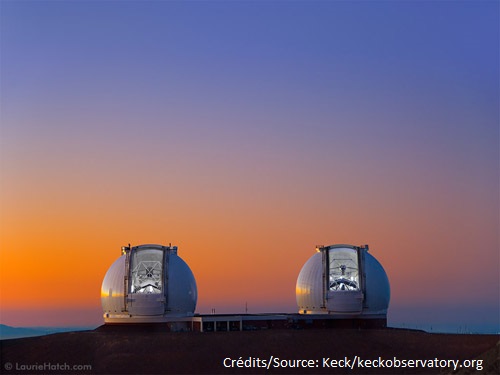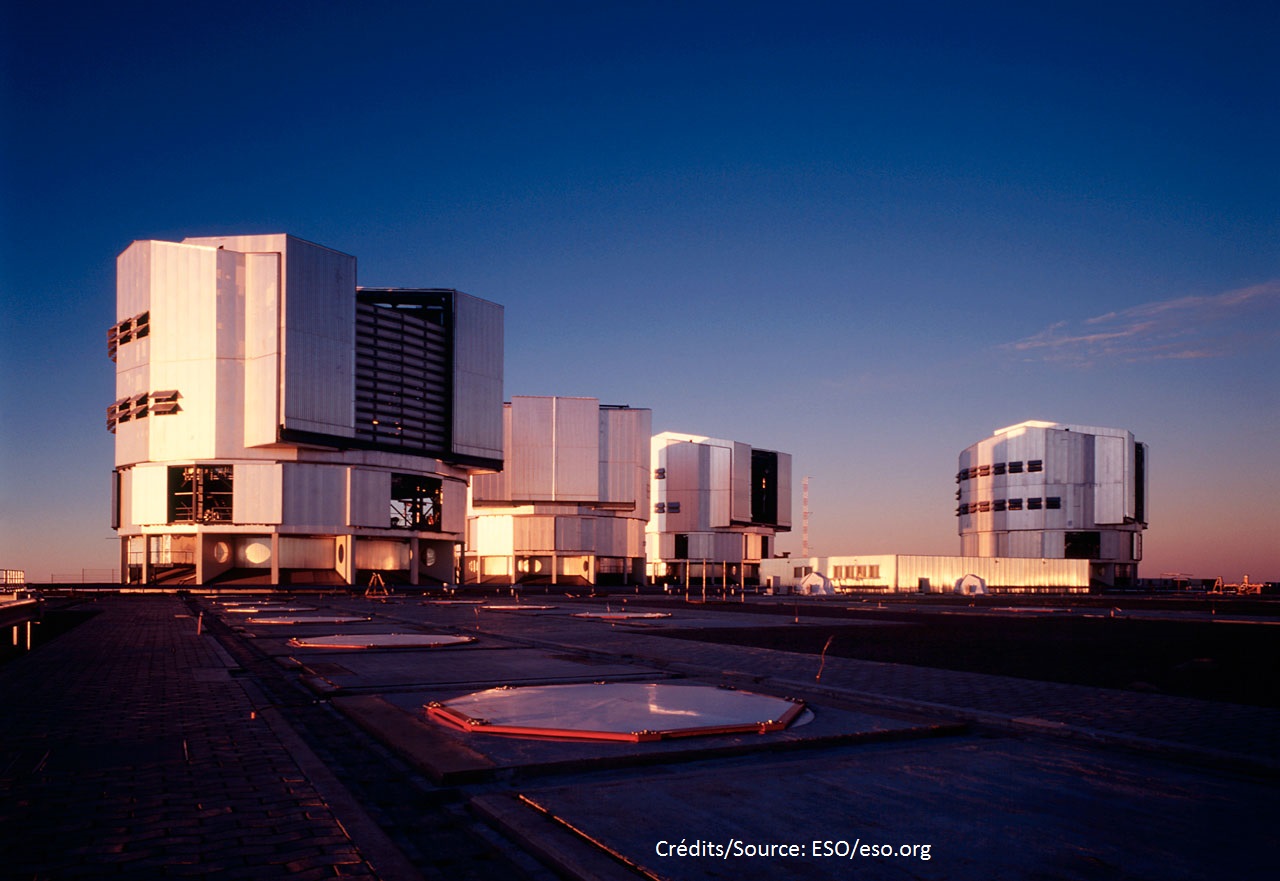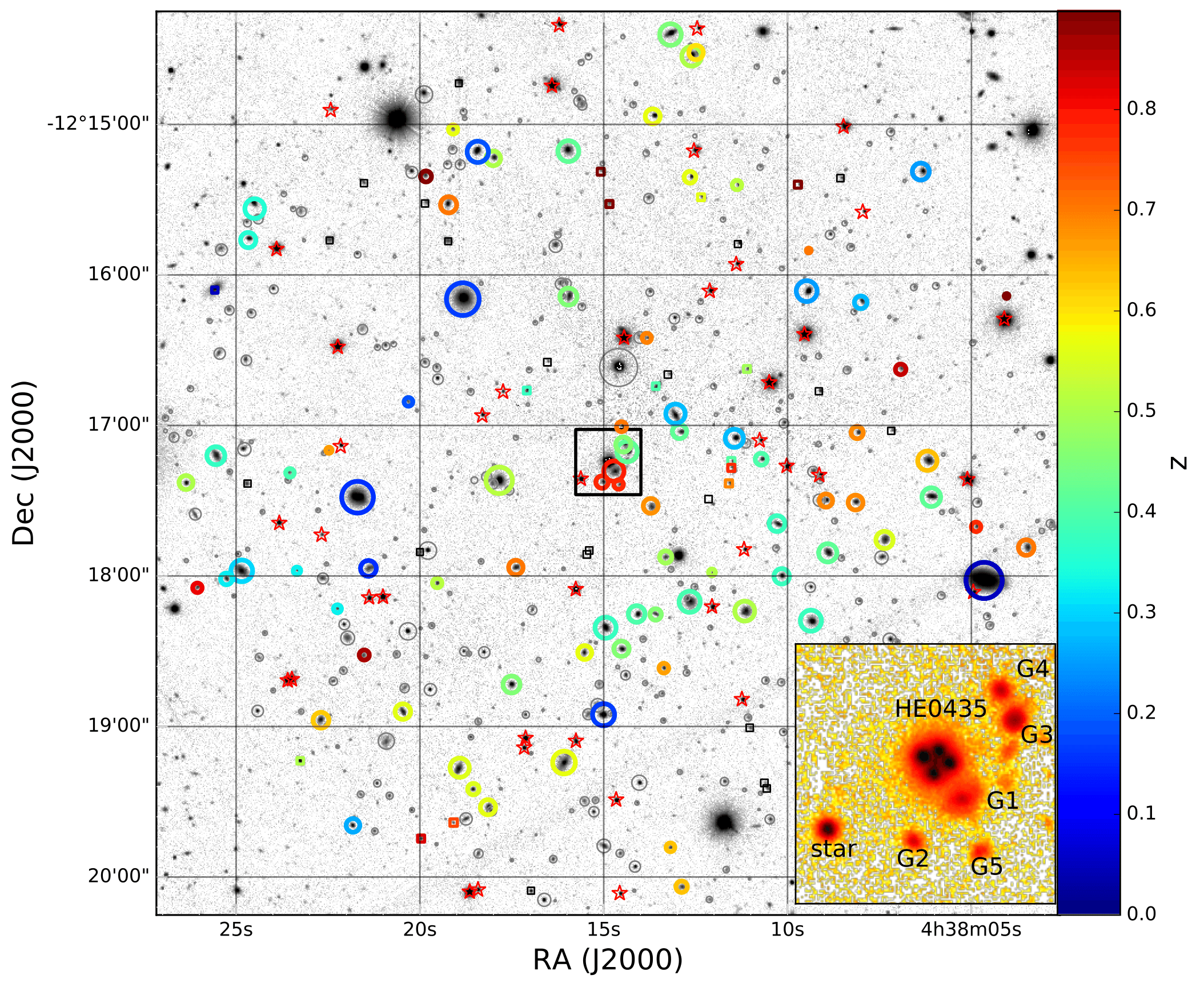H0LiCOW II. Spectroscopic survey and galaxy-group identification of the strong gravitational lens system HE0435−1223.
Galaxies located in the environment or on the line of sight towards gravitational lenses can significantly affect lensing observables, and can lead to systematic errors on the measurement of H0 from the time-delay technique. We present the results of a systematic spectroscopic identification of the galaxies in the field of view of the lensed quasar HE0435−1223 using the W.M. Keck, Gemini and ESO-Very Large telescopes (See Figure 1).



Figure 2: Overview of the spectroscopic redshift obtained from our new and literature data in a field of
view of 3'x3' around HE0435-1223 (black box and inset panel). Spectroscopically identified stars are
marked with a red "Star" symbol, while galaxies are marked with a circle whose size scales with its
i-band magnitude, and color indicates the redshift (right color bar). A gray circle is used when no
spectroscopic data are available. Galaxies that have been targeted but for which no spec-z could be
retrieved are shown as open black squares, those with a tentative redshift with a colored
square.

We confirm that the lens is a member of a small group that includes at least 12 galaxies, and find 8 other group candidates near the line of sight of the lens. The flexion shift, namely the shift of lensed images produced by high or- der perturbation of the lens potential, is calculated for each galaxy/group and used to identify which objects produce the largest perturbation of the lens potential. This analysis demonstrates that i) at most three of the five brightest galaxies projected within 12'' of the lens need to be explicitly used in the lens models, and ii) the groups can be treated in the lens model as an external tidal field (shear) contribution. The statistical impact of the groups and voids on the lens model is presented in a companion paper H0LiCOW III. The exhaustive lens modeling of HE0435−1223 used for cosmological inference, including all the environmental sources of systematic errors, is presented in another companion paper H0LiCOW IV.